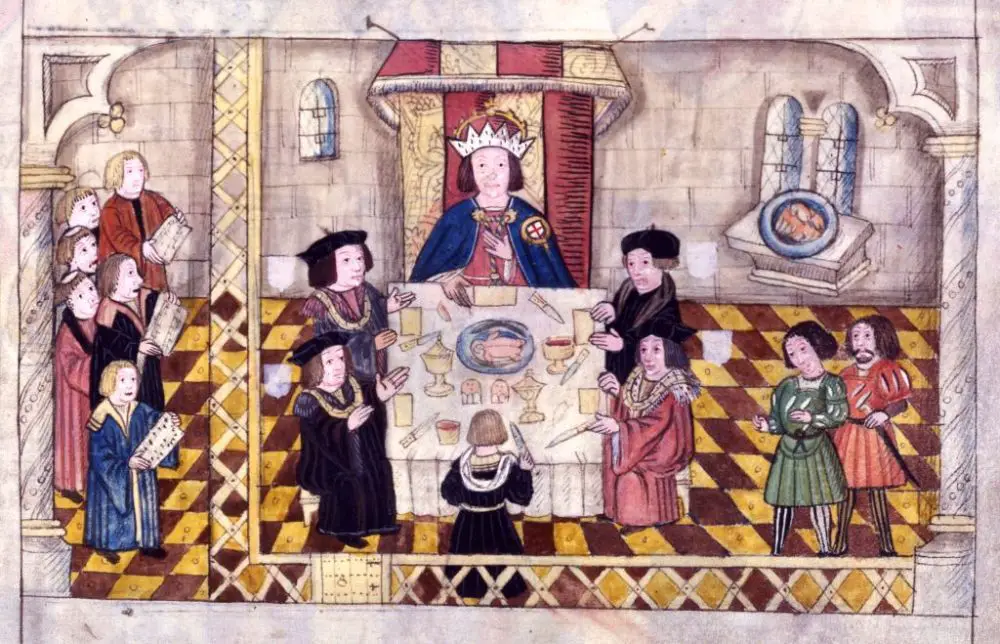What Are The Items In 12 Days Of Christmas?
The “Twelve Days of Christmas” is a popular Christmas song and tradition that dates back to at least the 1700s in England. It involves celebrating the twelve days after Christmas Day with specific gifts given each day. The traditional carol describes a series of increasingly grand gifts given by the singer’s “true love” on each of the twelve days of Christmas.
While the exact origins of the song are unknown, most scholars believe it began as a children’s forfeit or memory game. The cumulative structure builds in difficulty with each verse, challenging singers to remember all the previous gifts. Though its origins may not have been religious in nature, the song has taken on several Christian interpretations over the years.
Today, the “Twelve Days” carol remains a Christmas favorite. It has been adapted into numerous pop culture versions and parodies. Many families, churches, and communities continue to celebrate the twelve days of Christmas between December 25 and January 5 as a way to extend the holiday season.
The 12 Gifts
The 12 gifts given in the song “The 12 Days of Christmas” are:
- A partridge in a pear tree – This refers to a partridge (a type of game bird) perched in a pear tree, which was seen as a sign of good luck and fortune in medieval times.
- Two turtle doves – Turtle doves represent love and faithfulness.
- Three French hens – Hens represent nurturing, motherhood, and fertility.
- Four calling birds – The four calling birds are said to symbolize the four evangelists in the Bible: Matthew, Mark, Luke and John.
- Five gold rings – The five golden rings represent the five books of the Pentateuch or Torah for Jewish people: Genesis, Exodus, Leviticus, Numbers, and Deuteronomy.
- Six geese a-laying – Geese were common farmyard animals, and their eggs would make a nice gift.
- Seven swans a-swimming – Swans were considered royal birds, owned sometimes by royalty alone.
- Eight maids a-milking – Milk represented nourishment and provision.
- Nine ladies dancing – The nine dancing ladies were from medieval court dances.
- Ten lords a-leaping – The ten lords were also from medieval court dances.
- Eleven pipers piping – Pipers provided entertainment for weddings and feasts.
- Twelve drummers drumming – Drummers often accompanied soldiers into battle.
Together, the 12 gifts given in the song “The 12 Days of Christmas” symbolize good fortune, romance, celebration, and merriment.
Origins and History
The 12 Days of Christmas refers to the 12 day period from Christmas day on December 25th to January 5th known as Twelfth Night or Epiphany Eve. This period was considered a time of celebration that officially ushered in the Christmas season in Medieval England during the Tudor period The Twelve Days of Christmas.

The 12 days marked a season of feasting and festivity leading up to the Epiphany, the twelfth night of Christmas. The Epiphany celebrates the visit of the Three Magi to the infant Jesus Twelve Days of Christmas. The 12 days were considered a time to celebrate the nativity story and the incarnation of Christ.
The popular Christmas song “The Twelve Days of Christmas” is thought to have French origins as a memory and forfeits game from the late 18th century. However, the 12 days were associated with revelry, feasting and celebration since Medieval times in England. The 12th night was considered the climax of festivities The 12 Days of Christmas, explained: The story behind.
Catholic Interpretations
Many Catholics interpret the gifts in “The Twelve Days of Christmas” as representing symbols of the Catholic faith. According to Dynamic Catholic, “The partridge in a pear tree is Jesus Christ, the Son of God. In the song, Christ is symbolically presented as a mother partridge which feigns injury to decoy predators from her helpless nestlings, much in memory of the expression of Christ’s sadness over the fate of Jerusalem: ‘Jerusalem! Jerusalem! How often would I have sheltered thee under my wings, as a hen does her chicks, but thou wouldst not have it so…’ (Luke 13:34)” https://www.dynamiccatholic.com/advent/twelve-days-of-christmas.html.
The Eternal Word Television Network (EWTN) also discusses how each gift represents an element of Catholic doctrine: “The partridge in a pear tree is Jesus Christ, the Son of God. In the song, Christ is symbolically presented as a mother partridge which feigns injury to decoy predators from her helpless nestlings, much in memory of the expression of Christ’s sadness over the fate of Jerusalem” https://www.ewtn.com/catholicism/library/origin-of-the-twelve-days-of-christmas-10885.
Secular Interpretations
Many people view “The Twelve Days of Christmas” as a secular song with the gifts representing secular or pop culture references over time. According to Vox, some of the proposed secular meanings include:
- The partridge in a pear tree referring to Adam and Eve with the partridge symbolizing the devil.
- The two turtle doves representing the Old and New Testaments.
- The five golden rings seen as the five books of the Torah or the Pentateuch.
- The six geese a-laying representing the six days of creation.
- The seven swans a-swimming seen as the seven gifts of the Holy Spirit or the seven sacraments.
- The eight maids a-milking symbolizing the eight beatitudes.
- The eleven pipers piping interpreted as representing the eleven faithful apostles.
Modern pop culture has also associated the gifts with contemporary references. For example, some see the “five golden rings” as symbolizing the five Olympic rings. The “twelve drummers drumming” is sometimes seen as referring to the twelve members of a drum corps or rock band. While these secular meanings are not definitive, they provide interesting modern interpretations of the classic Christmas song.
Musical Style and Composition
The “Twelve Days of Christmas” is composed in a traditional English folk song and dance style. It follows a repetitive format with accumulative verses that add a new gift each round. The melody spans a single octave and follows a simple AA’BB’ form with two distinct melodic phrases that repeat and provide the structure for the accumulative verses.
The melody is written in 6/8 time, giving it a light, lively feel. It has a narrow range and repetitive rhythm that makes it easy to learn and sing. The limited melodic range also allows the song to build naturally as more verses and gifts accrue. The melody steadily moves upwards with each progressive verse until culminating on the highest note on the 12th day.
The accompaniment often uses only basic chords, like I, IV, and V. The harmony is functional and follows the melody in a predictable way. Overall, these musical qualities give “The Twelve Days of Christmas” its catchy, memorable, and playful sound.
Pop Culture References
The “12 Days of Christmas” song has been referenced countless times in pop culture over the years. Its popularity and familiar tune have made it a natural fit for parodies, spoofs, and adaptations across various media.
Some of the more notable pop culture references include:
- In the 1993 comedy film The Nightmare Before Christmas, Jack Skellington sings his own version called “13 Days of Halloween.”
- The TV show The Simpsons featured a parody version titled “The 12 Days of Christmas Island” in a 1991 episode.
- Comedian Allan Sherman released a comedy album in 1963 called For Swingin’ Livers Only! that included a spoof called “The Twelve Gifts of Christmas.”
- The Muppets performed their own humorous rendition in 1999 on the holiday album It’s a Very Merry Muppet Christmas Movie.
- Sesame Street characters sang “The 12 Days After Christmas” in 1978, enumerating the aftermath of receiving all those gifts.
- Bob and Doug McKenzie did a parody version in 1981 inserting strange Canadian references like “beer and back bacon” and “a moose.”
There are countless other references across TV shows, films, comedy acts, and music over the decades. The song’s quirky list of gifts makes it perfectly suited for playful pop culture twists and satire.
Economic Analysis
The PNC Financial Services Group has been tracking the hypothetical cost of all the gifts mentioned in the “Twelve Days of Christmas” song since 1984 (source). Their annual Christmas Price Index looks at how much it would cost to buy the full list of gifts each year. According to the 2023 index, purchasing all the gifts mentioned in the song would cost $46,729.86, up 19.84% from $38,993.59 in 2019 (source).
The PNC index uses the “True Love” standard, which means all gifts are purchased in multiples as indicated in the song lyrics. This includes 12 partridges, 22 turtle doves, 30 French hens, 36 calling birds, 40 gold rings, 42 geese a-laying, 42 swans a-swimming, 40 maids a-milking, 36 ladies dancing, 30 lords a-leaping, 22 pipers piping, and 12 drummers drumming.
The steep rise in the overall price tag reflects soaring costs for many gift items like gold rings and geese. Economic analysis of the index shows how inflation and supply chain issues impact holiday gift purchases.
Alternate Versions
Over the years, there have been many notable alternate versions and parodies created of the classic “The Twelve Days of Christmas” song. Some of the most well-known include:
Jeff Foxworthy’s “Redneck 12 Days of Christmas” brings a country twist to the song with gifts like “12 packs a Bud” and “Six cans of Spam” (https://hot1047.com/twelve-12-days-of-christmas-songs/).
The Canadian comedy duo Bob and Doug McKenzie released a parody version called “12 Days of Christmas” with references to back bacon and beer (https://christmas-specials.fandom.com/wiki/The_Twelve_Days_of_Christmas_(alternate_versions)).
Bob Rivers created “The Twelve Pains of Christmas” with lyrics focusing on more annoying aspects of the holiday season.
Straight No Chaser’s a cappella version brings beautiful four-part harmonies to the classic melody.
Allan Sherman’s “The Twelve Gifts of Christmas” changes the gifts to be more child-friendly items like roller skates and dollhouses.
There are countless other humorous and creative alternate versions that put a new spin on this iconic Christmas tune.
Conclusion
In conclusion, “The Twelve Days of Christmas” is a beloved holiday song that has origins as a memory game with hidden meanings. Although the exact origins are unclear, it may have started as a catechism song to help Catholic children learn their faith. Over time, it became a popular Christmas carol with numerous secular interpretations. The cumulative structure and repetitive nature give it a unique musical style. The song has been referenced frequently in pop culture and subjected to economic analysis. While the standard version is widely known, many artists have put their own spin on it with alternate lyrics and adaptations. Regardless of one’s interpretation, “The Twelve Days of Christmas” has become a mainstay of the holiday season, capturing the spirit of giving gifts to loved ones. After learning about the possible origins and evolving nature of this classic carol, one gains a deeper appreciation for a song that brings joy year after year.





